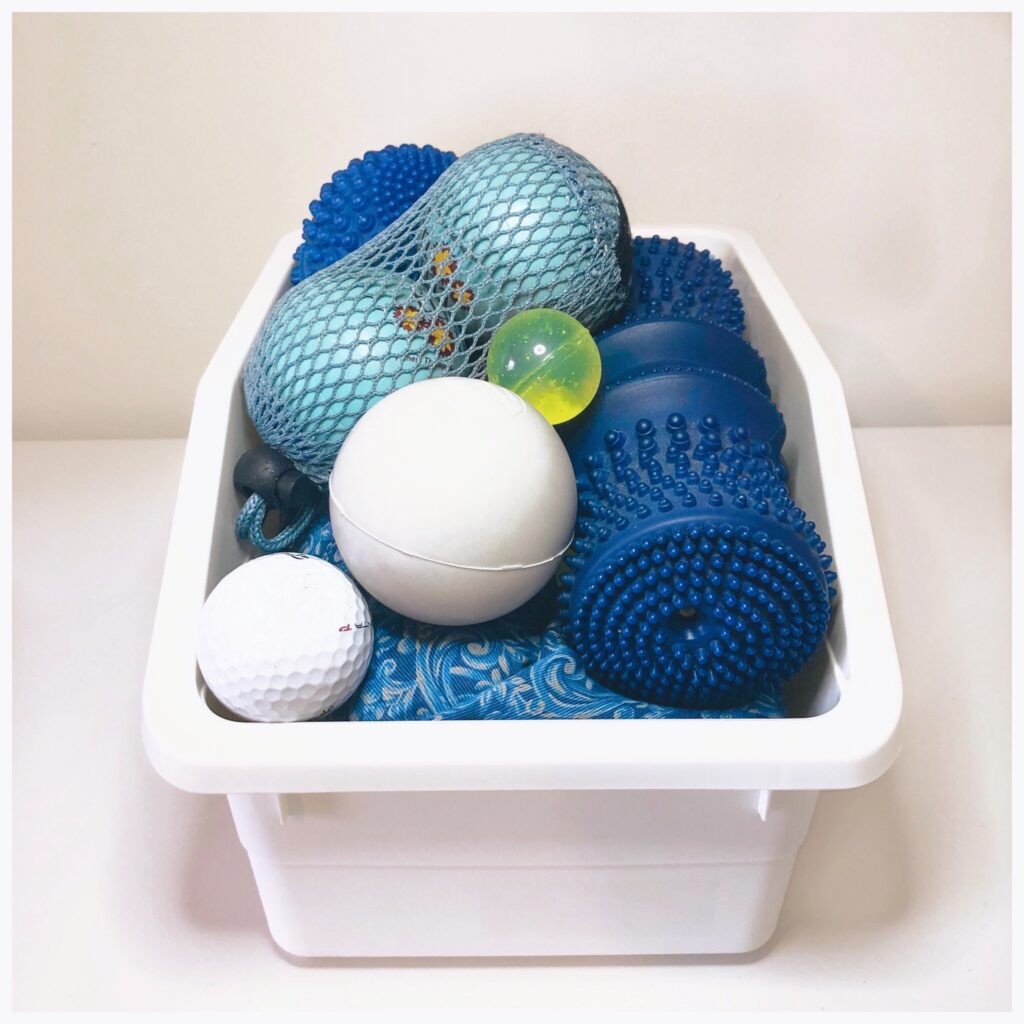Over the years of working as a therapist and practicing bodywork, I’ve had countless questions from clients, friends, and the general public about how they can self-treat their body. “Is it harmful?” “Is it helpful?” “How do I know if I’m wasting my time?” So, I thought it was only fitting to make my first post about this topic!
Lets make one thing clear before we get started…it goes without saying that no matter the tool you use to work on your body, it would never replace the experience that you’d receive by working directly with a therapist or practitioner. Not to mention, your therapist’s knowledge, eye, and expertise. However, not everyone can easily access regular care. Finances, time, travel, or unforeseen situations, (such as global pandemic) may impede this option. So if working directly with someone is not available to you, then the next best option could be to work on your own body.
Is it Harmful? Is it Helpful? How Do I Know If I’m Wasting My Time?
My general rule: If you’ve worked an area of your body a couple of times, and the problem doesn’t change..or gets worse, then you’re likely attempting to self-treat the symptom of the problem, and not the problem itself. This is how folks can develop more inflammation or exacerbate the problem. If you find that the problem is returning, not going away, or getting worse, it’s a safe idea to seek medical advice from your doctor or book an appointment with a trained professional.
There’s lots of great reasons to start a home care routine, however I should mention…if you’re looking to work on your body because you’re dealing with chronic pain or deeply rooted postural dysfunctions, it’s not likely you’ll achieve those changes with this approach. This approach may help with temporary relief, create more range of motion, or help assist as a warm-up routine- but to make long lasting changes with fascia you have to consider the entire system, and from my experience (even from working on my own body) I always need a second set of eyes (and hands) to help me through a process of change and shifting.
Getting Started
If you’re not sure where to start your body care routine- I got you! Over the years I’ve accumulated what I call my bodywork “tool kit”. These are my go-to tools that I’ve found useful. If I can’t get an appointment with my practitioner, I’m traveling, or I just need some immediate relief I usually reach for one of these five items. So if you’re looking to build your own self-care toolkit, below are some suggestions that you may want to consider.
Here Are My Top Five Tools
1. A Bouncy Ball
 Yup, that’s right. No fancy equipment needed with this. You can pretty much find a bouncy ball at almost any local dollar store. They’re inexpensive, easy to carry with you, and fantastic for getting deep into specific areas of the body where a tennis ball or foam roller may have difficulty. Whenever I want to work my hands and feet I use a bouncy ball.
Yup, that’s right. No fancy equipment needed with this. You can pretty much find a bouncy ball at almost any local dollar store. They’re inexpensive, easy to carry with you, and fantastic for getting deep into specific areas of the body where a tennis ball or foam roller may have difficulty. Whenever I want to work my hands and feet I use a bouncy ball.
If you can’t find one locally you can get it here: Clear Glitter Bouncy Ball Party Favors, Assorted 6ct
2. Gemstone Fascial Release Tools
 There’s many different types of gemstones that are common for working with the body- bloodstone, jade, amethyst, rose quartz, etc. I personally have a bloodstone massage wand that is great for working my hands, feet, and areas that are challenging to work on, like my forearms. Another great tool to travel with, keep in your purse, or gym bag, super easy to clean, and they’re pretty too!
There’s many different types of gemstones that are common for working with the body- bloodstone, jade, amethyst, rose quartz, etc. I personally have a bloodstone massage wand that is great for working my hands, feet, and areas that are challenging to work on, like my forearms. Another great tool to travel with, keep in your purse, or gym bag, super easy to clean, and they’re pretty too!
You can find this here: Big Rose Quartz & 7 Chakra Stone Message Wand, Charged Chakra Reiki Metaphysical Crystal therapy
3. Tune-up balls
 You can definitely use something similar like a tennis ball, but I find (because they’re hollow) they break down fairly easily. So my personal favorite are the yoga tune up therapy pair in a tote bag. These are great if you’re looking to get the most bang for your buck. With just the right amount of firmness, and the option to use one at a time, or both inside the tote, make’s this a personal favorite for traveling, or for my gym bag. I often use these when opening my shoulder blades, back, glutes and chest.
You can definitely use something similar like a tennis ball, but I find (because they’re hollow) they break down fairly easily. So my personal favorite are the yoga tune up therapy pair in a tote bag. These are great if you’re looking to get the most bang for your buck. With just the right amount of firmness, and the option to use one at a time, or both inside the tote, make’s this a personal favorite for traveling, or for my gym bag. I often use these when opening my shoulder blades, back, glutes and chest.
You can find this tool and more here: Yoga Tune Up Jill Miller’s Therapy Balls Deep Purple
4. Dr. Cohens Acuback
 One thing that’s great about Dr. Cohen’s products is they can be put in the freezer or the microwave to offer cooling or heat for your body while you use them. The first time I used the Acuback, I laid on my back (supine) and positioned it under my spine to match it’s grooves with my spine in the center. By just letting the pressure of my body melt into it, and working slowly down my back from the top of my neck to the base of my spine, I remember standing up and feeling such a sense of mobility I hadn’t connected with before. If I’m really in a jam (pun intended) this is my go-to.
One thing that’s great about Dr. Cohen’s products is they can be put in the freezer or the microwave to offer cooling or heat for your body while you use them. The first time I used the Acuback, I laid on my back (supine) and positioned it under my spine to match it’s grooves with my spine in the center. By just letting the pressure of my body melt into it, and working slowly down my back from the top of my neck to the base of my spine, I remember standing up and feeling such a sense of mobility I hadn’t connected with before. If I’m really in a jam (pun intended) this is my go-to.
You can find this tool and more here: Dr. Cohen’s acuball Heatable acuBack Deep Tissue Massage Roller for Back & Neck Pain
5. Foam roller
 These range from all kinds of different lengths, firmness, shapes, sizes, companies, and styles. Foam rollers are great when you’re looking to target larger areas of your body such as your quads, hamstrings, or back. I use a fairly in-expensive no name foam roller that is just shy of very firm. If you have sensitive tissue, starting with a softer foam roller will likely be ideal.
These range from all kinds of different lengths, firmness, shapes, sizes, companies, and styles. Foam rollers are great when you’re looking to target larger areas of your body such as your quads, hamstrings, or back. I use a fairly in-expensive no name foam roller that is just shy of very firm. If you have sensitive tissue, starting with a softer foam roller will likely be ideal.
Here are a few options:
1. Odoland 5-in-1 18″ Large Size Foam Roller Kit with Muscle Roller Stick and Massage Balls, High Density for Physical Therapy, Deep Tissue Trigger, Pain Relief, Myofascial Release, Balance Exercise …
2. AmazonBasics High-Density Round Exercise Therapy Foam Roller – 24 Inches, Black
So whether you’re just getting started on the self-care journey, or you’ve been at it for years, my best piece of advice is that it’s important to be gentle with yourself, and be kind to your body. Developing a relationship and caring for ourselves is a life-long journey. There’s no race. We’re all working towards the same goals with ourselves in our own unique way.
In wellness,
Hilary,
This post contains affiliate links meaning we may receive a small commission with no costs to you. This helps keep our blog running so we can continue to deliver awesome content on all things health and wellness!

Hilary Boucher
Hilary lives in Toronto, Ontario with her Fiance Ty, and their toy poodle Elu. When she's not assisting her clients, Hilary loves spending time in Northern Ontario (where she grew up) with friends and family. Hilary offers a variety of manual and movement services, courses, and continued education geared towards the ever-expanding minds and life-long students.
